Author: jez; Translator: TechFlow
Traditional finance (tardfi) has decades of experience and a well-established regulatory system, and these "investor protection" mechanisms, while often ridiculed, do effectively reduce risk. In contrast, the cryptocurrency space is like the Wild West, a relatively niche arena that has relearned the rules of traditional finance through bloody lessons. In this environment, competition is unequal, and some people understand the "unwritten rules" better than others.
The purpose of this guide is to share these lessons learned through experience. Unfortunately, those who need this advice the most may be watching funny videos on YouTube or following lilmoonlambo instead of reading my article here (as guide writers always think). However, I hope that you, as an insightful reader, can find some content that helps you.
I compare crypto to a massively multiplayer online game (MMO) because it really has a lot of similarities: health points, levels, online friends, player-versus-player (PvP), player-versus-environment (PvE), a bustling town square, and an economy system - except that the "gold" here is worth more than the gold in World of Warcraft. This is the origin of the "monetized metaverse".
The following is ranked in order of potential impact on your investment results (if you haven't implemented or understood it yet).
Teamwork: Don't be a lone wolf
Many people who step into the crypto world are born contrarians or like to fight alone. After all, it takes a lot of courage to ignore the dissuasion of family and friends (if they know). And once you taste a little success, it's easier to feel that you are "unique". "I just need to listen to the voice of the market!" - So says the typical lone ranger.

But I want to tell you, give up this "lone wolf mentality"! The market is lagging, it will only tell you where you are wrong after you make a mistake, and the crypto industry changes too fast, and there is no time for you to learn lessons slowly.
You need to find a group of excellent teammates and fight together. These teammates should be "workers" with high morals, hard work, and like-minded. The most important quality is resilience-make friends with those who are upset about their mistakes and take quick action, and stay away from those who only "comfort themselves". A high-trust chat group covers a wider range than you can do alone, and can quickly tell you what's right and what's wrong. The most helpful feedback is often blunt and may even be harsh - but even indifference is feedback.
If you can't find a team, reflect on your "value proposition". Generally speaking, unless you meet and make friends offline, invitations to join a team are usually based on "what value you can bring" and "whether you fit in." The best teams are made up of strong individuals - improve your abilities and reputation until you can join the team you want as an equal, rather than joining in a "handout" way.
Here are some of the types of "god teammates" around me:
Mentor: Someone who provides you with valuable experience in the early stages, just like I am writing this guide now.
Partners: Invest 10 hours a day, 2,000 messages, and make plans together at critical moments.
Signalers: Partners with unique vision, helping you distinguish which ideas are reliable and which are just "brain holes".
Prospectors: More daring partners, responsible for discovering new opportunities for everyone to screen.
Guides: Technical masters, solving various technical problems.
Experts: Consultants who provide professional advice in specific situations.
Many people think that the so-called "secret organizations" are some mysterious conspiracy groups, but in fact they are often just chat groups composed of friends. They grew up together and now have a certain influence.
The Importance of a “Home Base”
Not all group chats are created equal. There is a special kind of group chat called a “home base” that is the first place you log in every day, the first place you reply to messages, and most importantly, the first place you share information.
When you are deciding whether to invite someone to your high-trust group chat (in order to improve group efficiency), here is a counter-intuitive suggestion: try to avoid inviting high-profile accounts, because they often already have their own “home base”. Instead, the “newcomers” who are still full of energy and do not have a stable team are the most worthy of consideration.
The Risk of Complacency
Every group chat has its life cycle.
In its heyday, most people in the group chat are passionate and eager. This motivation usually comes from the newly joined smart people who have not yet achieved success but seem to have a bright future.
However, over time, group chats inevitably become complacent. Members gradually reach higher levels, and the pace of the "game" becomes slower and more methodical. The content of daily discussions decreases, and the topics begin to turn to areas such as life and politics.
If you want to stay at the forefront of the industry, you might as well make friends with those emerging and potential people and join group chats that are still "hungry". Think about the passion and desire when you first entered the industry, and immerse yourself in such an atmosphere again.
Choose a career and find your strengths
To succeed in this field for a long time, you must cultivate real strengths. Simply buying tokens that will rise in a bull market is not an advantage - but being able to recognize the signs of a bull market is the key. Joining a group chat that teaches you how to operate step by step may benefit you in the short term, but this advantage often expires quickly. Being able to make money consistently and steadily in a certain professional field is the real advantage.
Different strategies suit different personalities. If you are a patient and risk-averse player, you should not enter the high-risk arena of "pump.fun"; similarly, if you are a risk-averse person by nature, it will be difficult to stick with the field of liquidity mining for too long because you may be quickly distracted by other things.
Here are some successful skill classifications sorted according to different risk preferences.
DPS - Trader
This type of player focuses on directional trading and pursues high-risk and high-reward opportunities. Those success stories often cover up the losses of most people. To become a DPS main force, you need to have a high risk tolerance, excellent risk management skills, strong mental toughness, and the ability to maintain fighting spirit in the face of failure.
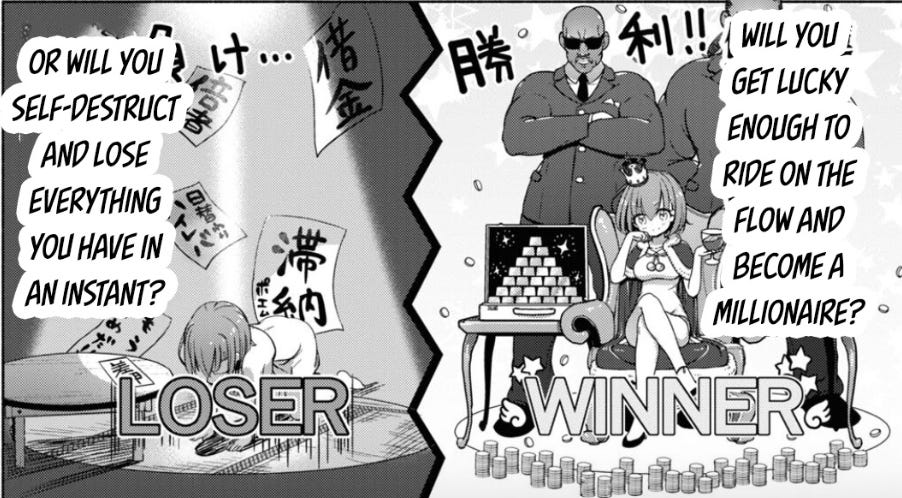
Trench Warriors
Shitcoin traders are the most diverse professions - the worst (even average) are very bad, and the top ones are very good. Players like req and nbs are able to make full use of on-chain information resources. If you consider yourself a "shitcoin trader" but haven't mastered your own on-chain analysis tools, you still have a lot of room for improvement. In my opinion, this is the only true alpha in this space.
While trading in shitcoins is a popular entry point due to low capital thresholds and high potential returns, this style is difficult to scale to higher levels. The problem is liquidity - newly issued coins have poor liquidity, which will increase slippage if you try to trade with a larger capital scale. In fact, buying too many coins may even cause the price of the coin to crash because you need to bear greater distribution pressure. Shitcoin trading also cannot be scaled horizontally by increasing trading volume or number of transactions because the failure rate is too high.
Those who have successfully emerged from the shitcoin market are advised not to look back easily unless it is a special case or you have a real advantage in it.
Hunters of high-quality new things
The core of the strategy of "hunting for high-quality new things" is to find a new token with strong fundamental logic, enter the market as soon as possible, and enjoy the subsequent appreciation process. Unlike those "trench warriors" who hold positions for days or even hours, this strategy is based on fundamental logic and usually takes weeks to months to see results. Of course, ideally the market will quickly agree with this logic. This is also my personal favorite style because it does not rely on "luck" and is more repeatable. The ideal operating range is: buy when the token market value is between 50 million and 100 million US dollars, and exit when the market value is about 1 billion US dollars. This strategy can be easily expanded to a higher investment scale.
Why choose new things?
The core logic here is "the market has not priced this thing correctly, it should be worth more". New things are easier to achieve this than old things, mainly for the following two reasons:
Time factor: The market has a shorter time to price new things, so its value has not yet been fully reflected.
Capital flow: New things have fewer existing holders and more potential buyers, so there is more room for capital inflow.
Of course, this does not mean that it must be a brand new token. Some old tokens may also become opportunities if they have a clear transformation direction, but they may have a little difficulty in development due to the resistance of existing supply.
How to find high-quality new things? The answer is "you will know it when you see it". But if you don't know where to start, you can refer to the following points:
Is it new enough?
This is the most important criterion. Pioneers often gain momentum beyond expectations, and their risk/reward ratio is very high. A brand new trend often triggers new discussions about the industry, and all attention will eventually return to the original thing.
Is there a flywheel effect?
The flywheel effect refers to a self-reinforcing cycle. For example, Shitcoins have a natural flywheel effect - as the price rises, holders become richer, more excited, and tell more friends, forming a positive feedback loop. Other flywheel effects may be more complex, such as the Bonding Curve, which can effectively kick-start project activities through deterministic early participation and guaranteed income incentives.
Is there an entry barrier?
The onboarding friction is an important part of verifying the investment logic. If there is no entry barrier at all, you need to ask yourself: Why am I so lucky to buy at a low price? Maybe the current price is already reasonable. At the same time, the existence of an entry barrier also means that there may be opportunities to lower the barrier in the future. For example, Rollbit's migration from Solana to Ethereum, the expansion of the ultra-liquid spot ecosystem, and even the launch of Bitcoin ETFs are all typical cases of lowering the entry barrier. Lowering the barrier often attracts more funds into the market, and those who invest their energy early usually benefit from it.
Meme priest
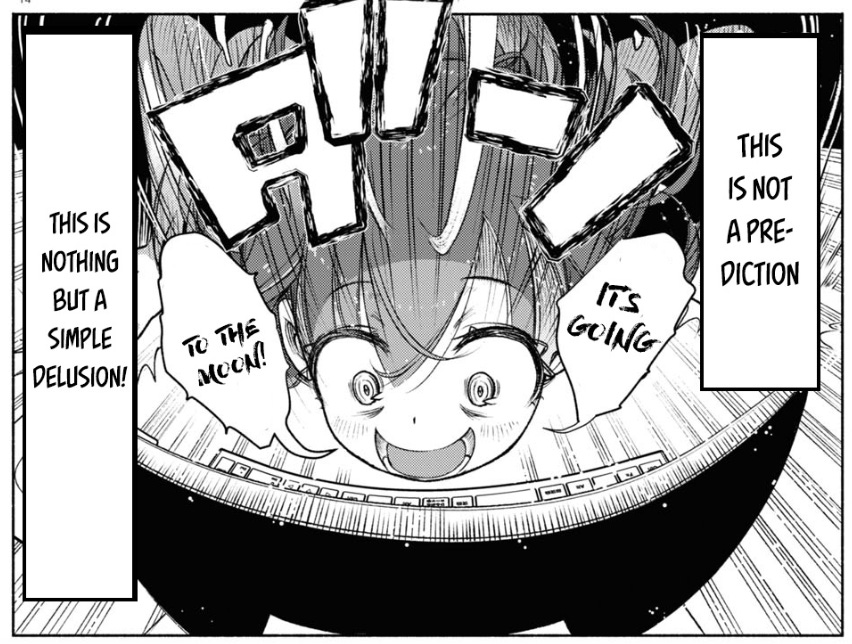
If "gem hunters" rely on fundamentals as support, then Meme priests completely abandon these boring things. Meme priests are NFT traders in this cycle. They intuitively catch market sentiment and look for Alpha. Just like NFT investment, "lying flat" after buying is usually the best strategy-until this strategy no longer works.
However, this path requires great faith support. You must be able to withstand the pressure of market retracements, while also accepting the negative emotions that such retracements may bring. The best meme priests can even change the odds of success through their actions. For example, baproll and spx6900, or dbl and fartcoin, are typical cases.

From another perspective, Bitcoin can also be regarded as a huge Meme on a larger level. When I look back on my investment experience, I find that if I "lie flat" and do nothing every time I buy a Meme, my returns often exceed those "active investment" operations. I wonder if this strategy also applies to you? Perhaps this is a question worth thinking about.
Leverage Wizard
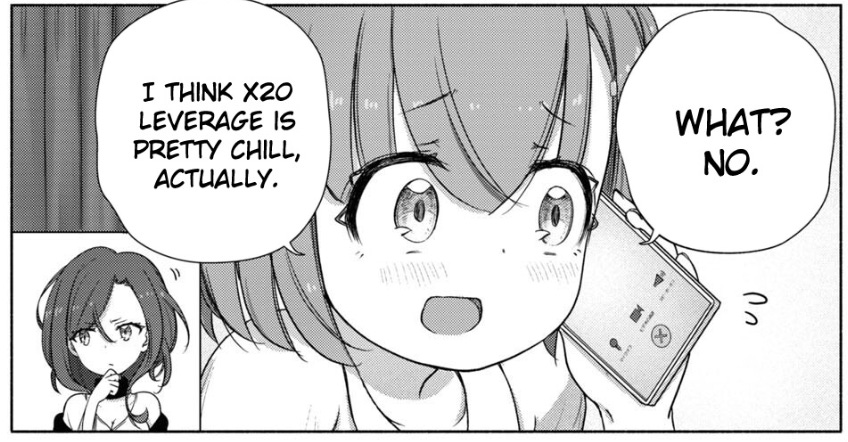
Among all trading categories, leveraged traders have the highest risk of failure. Their behavior is sometimes no different from that of "problem gamblers". According to experience, the problems of most leveraged traders are: using too high leverage, holding losing positions for a long time, and trading frequently. I once joked, "There are no successful leveraged traders in this world, only those who haven't blown up their accounts yet."
Leveraged trading seems simple, and there are always a few opportunities every year that make you think it's "easy". For example, the approval of the Bitcoin ETF or some major events. However, at other times, leveraged trading is more like a brutal PvP battlefield. Even if profitable, the returns from leveraged trading are often far less than simple asymmetric spot investment opportunities.
If you are considering choosing this category, I would strongly recommend you to give it up.
Farmers - Tank Meat Shield
Tank players are almost indestructible (unless they encounter smart contract risks). They have few losses, but their profit caps are also relatively fixed. Tank-type play is particularly suitable for investors who are very patient, risk-averse, or have limited time.
Stablecoin staking players
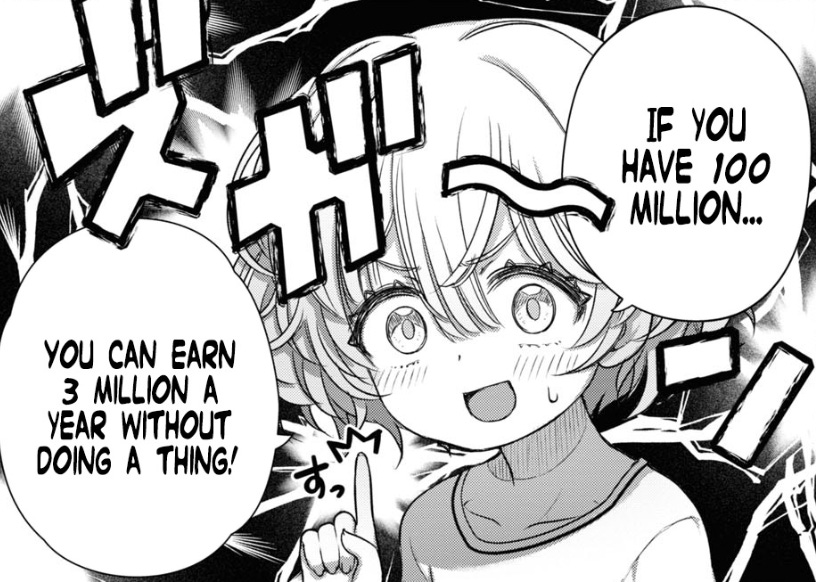
By providing liquidity to users or projects, they can obtain stable income. Currently, there are several main sources of income:
Funding rate trading
When market demand is strong (such as Bitcoin reaching a record high), the market demand for margin trading will be very strong, pushing up the funding rate (the annualized interest rate paid by longs to shorts). On major currencies such as Bitcoin and Ethereum, this fee sometimes exceeds 20% and penetrates the on-chain stablecoin market.
RWA income
Treasury bonds are currently the most common and liquid RWA, and have been successfully introduced into the crypto space. In contrast, real estate and other forms of real-world asset income are not recommended by me due to poor liquidity and high risk.
Token incentive income
The issuance of token rewards to users who provide funds is a major innovation in the DeFi field. Although the incentive mechanism is more complex today, there is still an opportunity for unexpected surprises. This is a true "player versus environment" (PvE) model, because the project party is happy to exchange the tokens they print for liquidity.
In addition, "market making liquidity providers" are emerging roles in this cycle, with high and stable returns. For example, GMX liquidity pools, as well as projects such as Jupiter and Hyperliquid, are all good choices.
Sybil/Wash Strategy
For those who are deeply involved in crypto projects, this strategy currently offers the best risk/reward ratio because it usually requires only a small investment. The core idea is to participate in a new protocol (either as a user or as a contributor to trading volume) as long as the expected reward exceeds the cost. However, this approach is gradually losing its effectiveness as more and more projects have realized that such "farmers" are exploitative and have begun to adopt linearly designed reward mechanisms to suppress such behavior.
The essence of this approach lies in an implicit consensus that projects need certain key indicators (such as the number of users, total locked value TVL, and trading volume) to increase valuations and attract new users. Unlike users who provide actual liquidity support, Sybil/Wash (i.e. users who forge identities or fake transactions) creates only a false prosperity. Even so, there are still many projects willing to pay fees with their own tokens just to show a beautiful data dashboard on Dune Analytics.
The most aggressive operations I’ve heard of are usually programmatic and constantly fighting detection mechanisms. For example, I once decided not to touch zkSync after hearing about an automated operating system consisting of 12,000 bots on a project.
If you want to actually try this approach, a practical approach is: when you find a new project with potential, you can interact with it with a few accounts you normally use.
Support players - other categories
These styles are neither trading nor staking, but they are unique enough to be divided into a separate category.
Insider
There are many types of insiders, some of which are helpful to the development of the project, while others may be malicious. But in any case, being an insider is a privilege, and they are much less risky than ordinary investors.
So what is the difference between an investment insider and a seed insider? It’s usually the quality of the project — in the past, venture capital could be a signal of project quality, but that standard is changing.
In fact, most project founders are more willing to accept private messages (DMs) than you think, especially in the early stages of the project. For example, NBS’s pre-sale strategy: waiting until the end of the pre-sale to participate, and private messaging developers at the same time, is also a manifestation of an internal strategy.
Builders
If you are a builder, my only advice is: stop reading this article and get back to building! Maybe this article will help you better understand user personas, but nothing is more important than constantly iterating and finding product market fit (PMF). Think about the best builders you know — are they reading this?
Onchain Rogue
There are many untapped opportunities in the blockchain space that can be explored and profited by those with the technical ability, curiosity, and energy. For example, sniping, sandwiching, randomness exploits, etc., these edge cases are waiting for those who are interested to discover and exploit them.
Leveling Guide
While trying to level up, you need to know whether you are in "speed run mode" or "hardcore mode".
Speed Run: This mode allows you to start over after failure. It is similar to "Hypergambling" and is suitable for people who have other sources of income, or students with high income potential in the future. Because there is less fear of failure, speed run mode can take more risks.
Hardcore Run: This mode has a lower tolerance for failure. For example, if your funds are life savings, or you live in an economically disadvantaged area, or even need to support your family, then you cannot afford the risk of losing your funds to zero, and this belongs to the hardcore mode.
Four-digit assets and below stage
If you already have a job or are in school, you can skip to the next section.
At this stage, your time should be spent earning fiat currency - a minimum wage job is equivalent to an annualized rate of return (APR) of 150%. And I believe that you, dear reader, can do more.
In fact, for a portfolio of this size, you cannot get enough returns to justify investing a lot of time. The only exception is Sybil airdrop, but this does not require full-time commitment. 10x returns are rare and should be reserved for higher asset levels.
If you live in an area where job opportunities are scarce, try joining a protocol as a community manager or other role they need. The easiest way is to become part of the community as the protocol grows so that when they need to hire, you are already a core member of the community.
Five-digit hell - focus on increasing fiat income
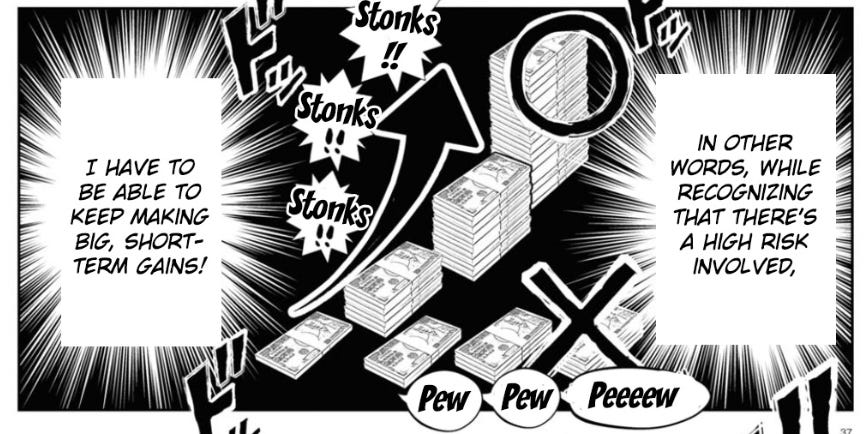
Welcome to the trenches. At this stage, every dollar is as precious as ammunition on the battlefield - they are prepared to help you find that 10x return opportunity.
Many people try to be "trench warriors" without really mastering the required technology, or take risks to try to become "leverage wizards". These people are usually trapped in five-digit hell until the bull market pulls them out - but they will soon fall back.
However, I found that investors who hold MemeCoin for a long time or are good at discovering "good new things" are often able to successfully break through. Their strategy is simple: firmly buy and hold spot assets.
Whether you choose the hardcore mode or not, Sybil airdrops are a low-cost way to participate. Just one large, non-linear airdrop opportunity is enough for you to graduate from this stage.
Six-digit hell - looking for 10x returns

Grasp the best point. When your capital reaches a certain scale, you can easily seize a 10x return opportunity without worrying too much about the size of the capital or slippage. In the "New Opportunity Hunter" section, it is mentioned that the ideal investment opportunity is usually from a market value of 50 million or 100 million US dollars to a scale of 1 billion US dollars.
I have personally escaped from six-figure hell four times and have been lucky enough to never fall back. The strategy is the same every time:
Keep an eye on new opportunities: Always keep an eye on new projects or trends with potential in the market.
Test your hypothesis: Invest a small amount of money first to test whether your investment hypothesis is valid.
Heavy position and hold firmly: After confirming the hypothesis, invest most of the money and wait patiently for the verification of the strategy.
Take profits when the market is hot: When you find that everyone in the market is talking about this project, it is a good time for you to take profits.
Looking back on each successful experience, there is one thing in common: I bet on exchange tokens. After all, speculation has always been the most lethal product-market fit in the cryptocurrency market.
Seven-digit hell - looking for a few 2-3x returns
When the fund size reaches seven figures, looking for some 2-3x opportunities is the key to getting out of trouble. The overall strategy is similar to the six-digit stage, but it requires more patience and repetitive operations. However, as the scale of funds increases, the difficulty of operation also increases, especially to maintain flexibility in market fluctuations.
At this time, the biggest challenge is how to allocate funds. You may find that the liquidity of some projects is insufficient to support the investment scale you want. This forces you to diversify your investments. In the six-digit stage, you can concentrate all your funds on the best ideas; but in the seven-digit stage, this approach is often no longer realistic.
When there are no new opportunities in the market that are attractive enough, temporarily parking funds in stablecoin liquidity mining (Stable Farms) is a good choice. This approach provides stable returns while giving you time to wait for better investment opportunities. Patience is especially important at this stage.
In addition, between different "good new things", parking capital in stablecoin farming has become more attractive. Patience is especially important at this stage.
Eight figures and above
At this stage, what else needs to be said? The only thing that people who can reach this level need to remember is: "Don't screw it up."
Don't stand in the fire pit
Avoid the following common mistakes.
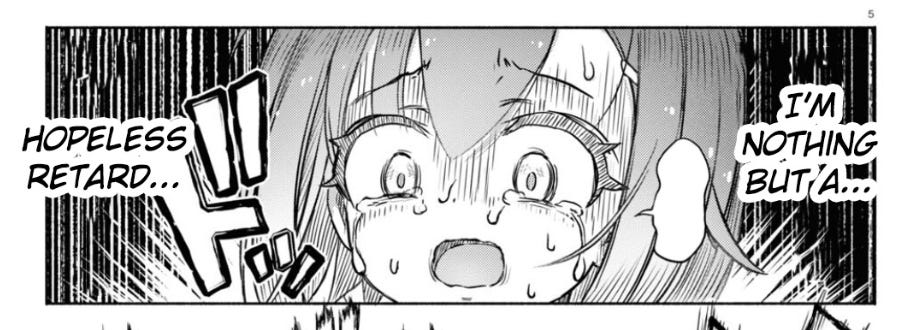
Avoid trading when you are emotionally out of control
Learn to recognize your emotional changes. When you feel yourself starting to lose control, decisively sell your position and temporarily leave the market. Chasing losses never brings good results, and it is wise to calm down.
Avoid making random bets after a big win
After a big win, it is often easy to make stupid losses due to overconfidence. I call this situation "euphoria trades" No matter what kind of victory you have just experienced, always maintain rigor in the trading process and avoid being swayed by emotions.
Avoid circular cashing
When trading, always ask yourself a question: "Who else will buy?" The essence of the market is the flow of funds, not static. Sometimes, some assets look safe just because everyone is holding it, but this does not mean that it is really risk-free.
Forget floating profits and losses and historical highs
Dwelling on past mistakes will only waste your energy. Obsessing over these things will confuse your thinking and affect your next decision. Let go of the past and focus on future opportunities.
"Insider information often makes people lose the most" -cl207
When hearing so-called "inside information", carefully evaluate your position in the information chain. The further you are from the information source, the more likely you are to become a liquidity provider for those who need to exit.
Don't add to your position when you are losing
"Losers only add to their losing investments" is a common mistake in the market. If the market has clearly told you that your judgment is wrong, then don't continue to add to your position without a good reason.
Old coins are not good, new coins are more attractive
New projects often have greater growth potential, while old projects may have lost their appeal. For this point, you can refer to my previous detailed analysis of capital flow.
Qualities of the Best Players in the Game - David Sirlin
David Sirlin is a competitive fighting game champion who wrote a book called "Playing to Win" to share his strategies and experience. For anyone who has participated in high-level competitions, these contents may be familiar. But the qualities he summarized for successful players are also applicable to investors in the crypto space. These qualities include:
A deep understanding of the market: Understanding historical trends and precedents can help you predict future market changes.
Love the market: You must love this "game" before you are willing to invest enough time and energy to win.
Psychological toughness: This market will make you experience countless collapses, but you need to stick to it.
The right mindset: When you encounter losses or misfortunes, do you choose to face it calmly or complain angrily?
Technical ability: Do you have unique skills or advantages?
Adaptability: Can you flexibly apply your advantages to new environments or rules?
Yomi (prediction ability): Can you accurately predict the behavior of other market participants?
Evaluation ability: Can you relatively judge the value and potential of things?
 Weatherly
Weatherly













